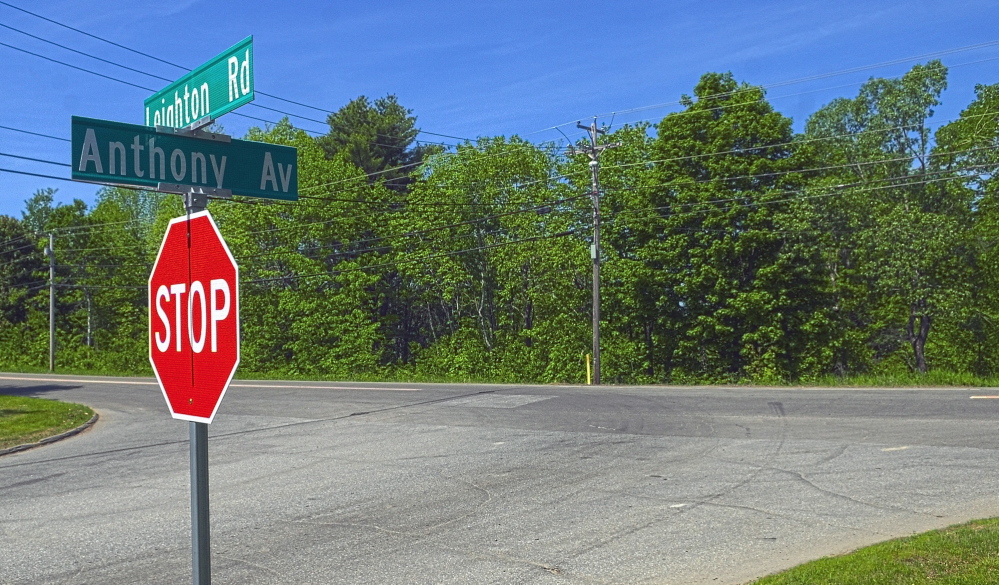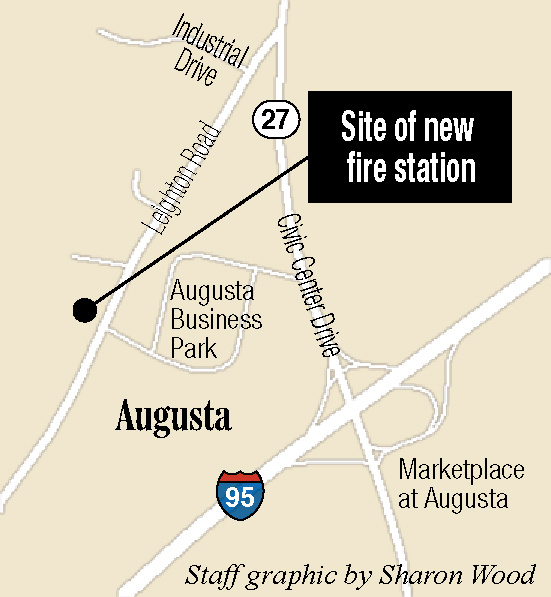AUGUSTA — The soil below the city-owned spot selected for a new fire station in north Augusta isn’t up to the task of bearing the weight of the new station and the heavy firetrucks that would be kept there.
Rather than abandon the lot and plans to build a station there within a year, city staff recommends spending about $500,000 to install structural steel pilings extending at least 60 feet down to provide a solid base for the fire station and the concrete floors that will bear the weight of water-filled firetrucks and ambulances.
City Manager William Bridgeo said there were no signs the soil wasn’t up to the task of supporting the weight of a fire station until the city had test borings done as part of the engineering for the site which revealed “soupy” clay soil.
“They did test pits where they went 10 feet down, and it’s soup,” Bridgeo said of the discovery of soil conditions at the site off Leighton Road across the street from its intersection with Anthony Avenue. “Then they went 20 feet down, still soup. Then they brought in the (drilling equipment) and went down 30, 40, 50, then 60 feet before they finally hit bedrock.”
If the building weren’t a fire station where heavy firetrucks will be kept, the pilings might not be needed, as the soil may be stable enough to support lighter-duty structures such as a home or one- or two-story office buildings, said Bridgeo and Ralph St. Pierre, finance director and assistant city manager. But engineers expressed concern the concrete floor of the new station could crack if built on the unstable soil with heavy firetrucks constantly rolling in and out of the station and across the floors.
“When you put a massive firetruck with a tankful of water rolling back and forth, back and forth, there’s a good chance you’re going to end up with cracks,” Bridgeo said. “And this building is being built for 75 to 100 years of use, so it’s prudent to get it right from the get-go.”
The projected budget of $3.6 million for the new station doesn’t include the recently discovered need for about $500,000 worth of pilings to stabilize the site.
Bridgeo said the pilings project would be similar to what was needed for the new Capital Judicial Center in Augusta, but with far fewer pilings. The fire station site is likely to need about 25 pilings under the roughly 10,000-square-foot fire station. The judicial center required 282 pilings to support that much larger structure.
In November 2014, voters approved bonds of $3.6 million for the fire station and $1 million for a new multipurpose firetruck before the need for $500,000 in additional funds was known.
St. Pierre said the city, however, has $847,600 collected in property taxes on new development in five different Tax Increment Financing districts in the city, and each of those TIFs was established with potential allowed uses including expenditures for fire department infrastructure. Those funds could more than cover the additional cost and, if councilors approve, be used to keep the project moving forward.
Matt Nazar, the city’s development director, researched other sites in the north Augusta area, looking for alternatives where a station could be built. He said all the potential sites presented their own development challenges, such as bad soils, ledge or existing buildings that would need to be demolished.
Bridgeo said the cost of buying a new site and developing that would likely be higher than the $500,000 cost of moving forward with the current site, which is known as the Quimby lot.
The lot was acquired by the city for $175,000 in 1999 in hopes of using it to attract business to the area. However, the city never drew development to the site. Bridgeo said the fire station will take up only a portion of the lot, and the rest could still be developed.
The issue of what to do about the fire station site goes to city councilors Thursday for discussion. The 6:30 p.m. informational meeting will be held in council chambers at Augusta City Center.
Councilors are also scheduled to:
• Discuss a proposed new property maintenance ordinance that would require property owners to keep their buildings and land from falling into disrepair or becoming unsightly;
• Discuss lowering the per-capita fees charged to the seven surrounding municipalities that use the city-owned Hatch Hill landfill from $15 to $10 per capita. Bridgeo said doing so would reduce revenues by about $100,000 a year, but could result in greater usage of the facility and thus increased revenues from tipping fees, and could help prevent member municipalities from leaving Hatch Hill and contracting with another solid waste facility;
• Hear from a resident with concerns about the recently adopted Abandoned Property Ordinance;
• Discuss a committee’s recommendation to seek bidders and sell off city-owned properties at 36 Oak St., 110 Northern Ave., 44 State St., and 4 Chase Ave.;
• Discuss parking ordinance changes which, when combined with changes approved by the Augusta Parking District board of directors, would change the current one-hour parking limits on Water Street in downtown Augusta to two-hour parking limits.
Keith Edwards — 621-5647
Twitter: @kedwardskj
Copy the Story LinkSend questions/comments to the editors.





Success. Please wait for the page to reload. If the page does not reload within 5 seconds, please refresh the page.
Enter your email and password to access comments.
Hi, to comment on stories you must . This profile is in addition to your subscription and website login.
Already have a commenting profile? .
Invalid username/password.
Please check your email to confirm and complete your registration.
Only subscribers are eligible to post comments. Please subscribe or login first for digital access. Here’s why.
Use the form below to reset your password. When you've submitted your account email, we will send an email with a reset code.